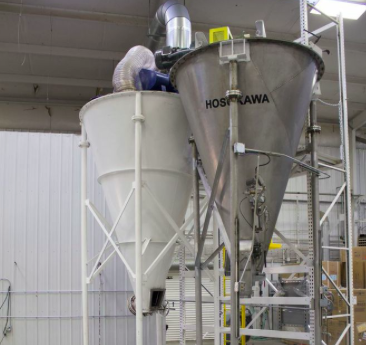Special Edition: Outsourcing
Straddling supplement/foods fence a common dodge in sports nutrition sphere, contract manufacturer says

Mark Pedersen, ND, is senior vice president of research and development with Capstone Nutrition, an Ogden, UT-based pure play contract manufacturer which he says is the “probably the largest contract manufacturer that doesn’t have it’s own brand.” Speaking with NutraIngredients-USA at the recent Vitafoods Europe trade show in Geneva, Switzerland, Pedersen said that a confluence of macroeconomic factors have created a market that he hasn’t seen before.
Protein is the mainstay of many sports nutrition formulations. A key element of the protein market is the price of inputs, and many of those are driven at least in part by the price of oil, Pedersen said. The benchmark oil price dipped to a decades-low in January of $45 a barrel. Though that price has risen again recently past $70 a barrel, the prolonged period of low prices continues to send a pulse through the market that has served to fundamentally alter the playing field, Pedersen said.
“When we talk about protein we’re talking about commodities,” he said. “And right now they have dropped as low as I have seen them in a generation. You are feeding low-priced corn to cattle, and that affects the prices of milk and whey.
“If the price of oil goes back up I think you will start to see a lot of protein players bailing out of the market,” Pedersen said.
Problem children
The spotlight that the offensive launched by New York Attorney General Eric Schneiderman has turned on the industry has led some observers to question some basic assumptions and long-tolerated practices. Pedersen said that protein-based sports supplements occupy a niche that he believes is created by inadequate enforcement of existing regulations and a fuzzy definition of when a tub of powder is a food or a supplement. Allowing products that is in his mind are clearly foods to fly the supplement flag muddies the picture. Supplements ought to be able to deliver the stated strength of the ingredients that are on the label at the end of their shelf life, Pedersen said. Food products, on the other hand, can contain a certain percentage of the stated label amounts in recognition of the natural variability of agricultural processes. And therin lies the rub, Pedersen believes; many sports protein brands claim to be one thing, and behave as if they are the other.
“If I could change one thing in the whole industry it would be to have the government come in and enforce what a supplements facts panel really means. They have a supplements facts panel on the back but they only have 80% of what it says is in there. I would say 95% of the products we manufacture for customers are sold that way. It make me mad,” Pedersen said.
But many of the sports nutrition formulators his company works with are pandering to their customer base, Pedersen said. While the category has expanded in recent years to include new demographic groups, dedicated gym rats are still the hard core of consumers.
“The consumer’s don’t seem to care. They are looking for things to put mass on their muscles. As long as it does that, it could be radioactive and they’d still take it,” he said.
Moderating behavior
Pedersen said that the risk-talking mindset of his customers can put a contract manufacturer in a sticky position.
“FDA put all of the responsibility on the contract manufacturers to be gate keepers,” Pedersen said. “We have to test for identity, purity and potency. The government excluded the ingredient suppliers from complying with those aspects of the GMPs, and they may or may not test their material when it comes from overseas.
“The ultimate responsibility rests with the brand holder, and we make them understand that they own the brand and that responsibility. But the sports nutrition people tend to wait until somebody slaps their hands,” he said.
Market churn
Contract manufacturing is a highly competitve sector, Pedersen said, and the current landscape has allowed competitors to grow rapidly by catering to the quick in-and-out nature of internet retailing. It’s a difficult market to police.
“I can tell you the playing field is not level. Competitors are springing up left and right and they may not have the ability to or may not choose to do adequate testing. They’ll have bottles on the shelf ready for your label. In the internet business, if you can sell 500 bottles a month, you have a rip-roaring business. Even if you can only sell 100 bottles a month, you can still have a profitable business if you are a one-man shop,” Pedersen said.














